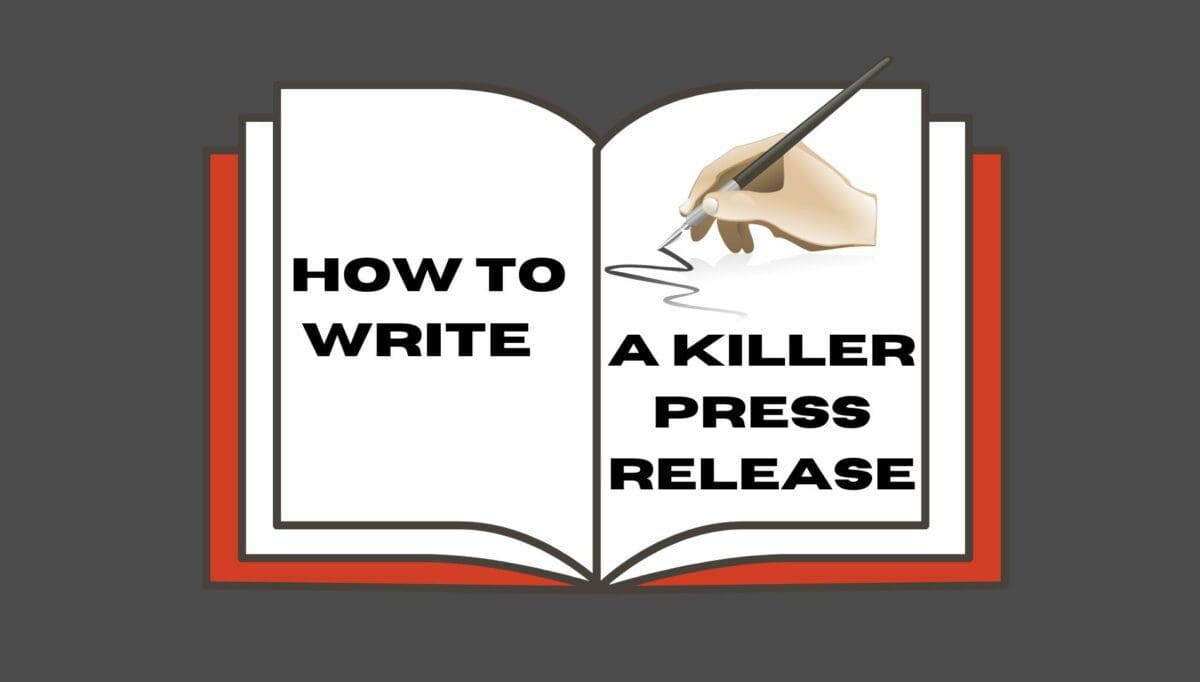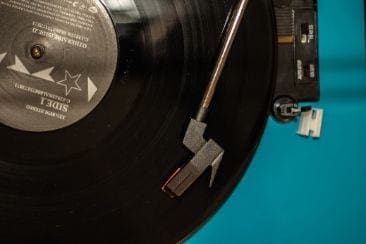Ever wondered what the difference is between a symphony orchestra and a philharmonic? Or struggled to pick out which instrument is making which sound in a big ensemble? Or, come to think of it, what is an orchestra at all? For a lot of us, the prestige, size, and complexity of these huge instrumental ensembles can be a bit much.
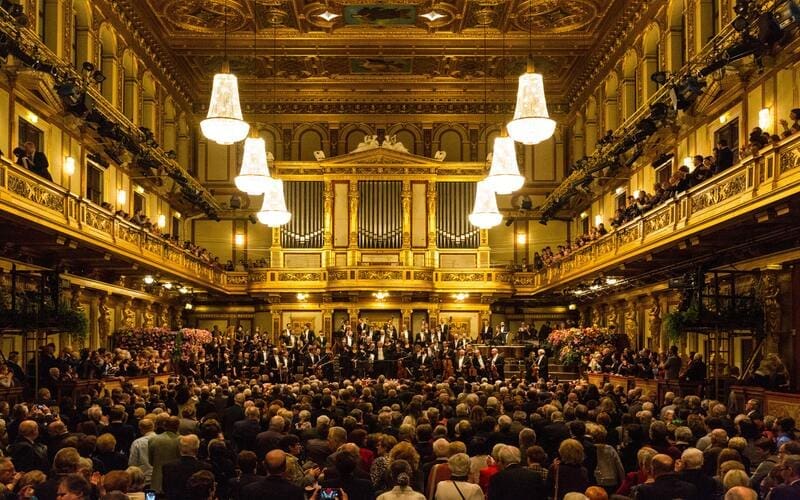
Never fear! At Мusic Gateway, we’re giving you your very own guide to the classical world.
We’ll find out how many people in an orchestra play each part. How you define different types of and what job prospects and salaries look like as an orchestral musician. Let’s go!
A Brief History
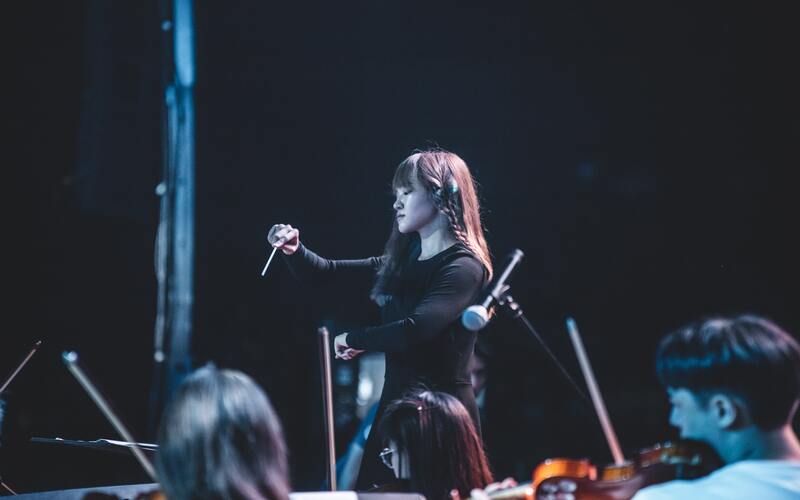
To really understand what an orchestra is we’ll have to go back in time.
The Ancient Greeks, as well as developing scales and musical instruments also came up with the word ‘syn’ (together) ‘phone’ (sound/voice), symphony. We can understand a symphony – the noun for a type of composition – as requiring multiple parts, ‘sounding together’.
By the Baroque period of Western Classical Music (1600-1750), you’d expect to see 30 people ‘sounding together’, featuring mixed instrumentation. Monteverdi, actively developing the new genre of opera in the 1600’s, is often credited with putting together the first ensembles we might call orchestras today.
Classical composers like Mozart and Haydn built upon these Baroque foundations but went bigger, increasing the size of their orchestras. Allowing for a greater dynamic range. By the Romantic era (1830-early 1900s), orchestras had swollen from 25 members to over 100.
These huge ensembles demanded a conductor to keep every together and ensure balance with so many competing parts. They also necessitated the building of huge concert halls which we use today! Women didn’t join orchestras until after WWII but are increasingly well represented in classical music.
What Is An Orchestra?
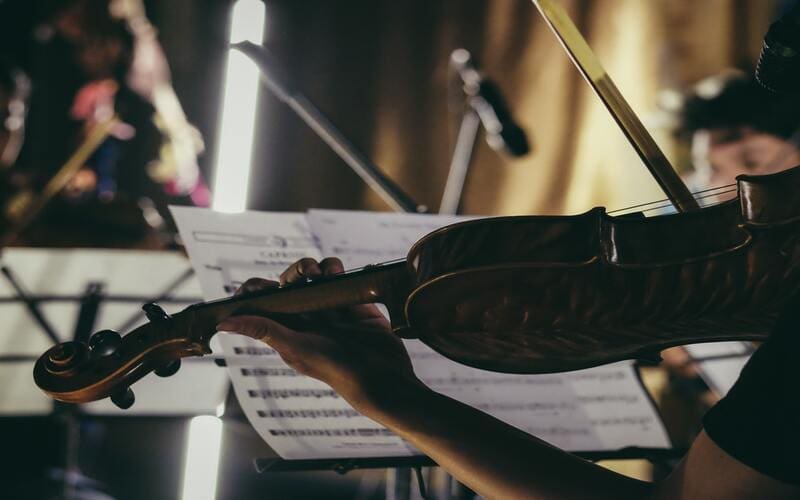
An orchestra is really a large ensemble of instrumentalists playing together in one of four ‘families’. Orchestral families are what we call the groups of instruments and comprise: strings, woodwind, brass and percussion.
The exact orchestra instruments can vary depending on what the composer demands in the instrumentation. For example, some orchestral pieces require a vast array of percussion parts while others might require just one triangle. How many instruments in an orchestra and the music they play dictates what type of ensemble they are.
Chamber Orchestras have less than 50 players and tend to play Classical music (from the 1800s). Classical arrangements are more appropriate for a smaller ensemble of 50 than an epic Romantic or modern score. The term chamber comes from the French ‘chambre’ (room). Indicating the type of performance space needed – a room as opposed to a concert hall. Confusingly, these groups do not always play ‘chamber music’.
Traditionally, chamber music was written with one player per part whereas orchestras, including many chamber orchestras, tend to double up parts to allow for more dynamic range and power.
What Is A Symphony Orchestra?
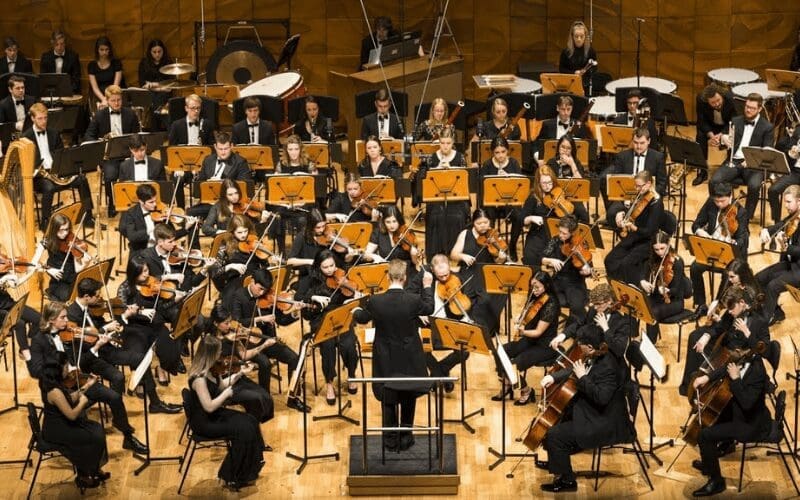
A full orchestra, such as symphony orchestras and philharmonic orchestras, has around 100 members, sometimes more. In these types of orchestral music, there are many musicians to a part and frequently different instrument parts, with a similar range, double one another.
Both philharmonic (love of harmony, in Greek) and symphony (sounding together) mean harmonious music. Initially, philharmonic orchestras would play a wider variety of music than symphony orchestras. Which would only play symphonies.
Symphonic music is formulated around four movements which are fast>slow>medium fast>fast. The symphony emerged in the 18th Century and was popular because the structure allowed lots of room for composers to explore different themes and ideas. The opening of a symphony is usually in sonata form (ABA), for example, while the end is usually in rondo form (ABACADA).
Nowadays, ‘philharmonic’ and ‘symphony’ labels are largely interchangeable and are mostly used for different orchestras from the same area to differentiate their names. Symphony orchestras now play other types of orchestral music beyond the symphony. But they will always have a large ensemble of at least 100 performers.
What Instruments Are In An Orchestra?
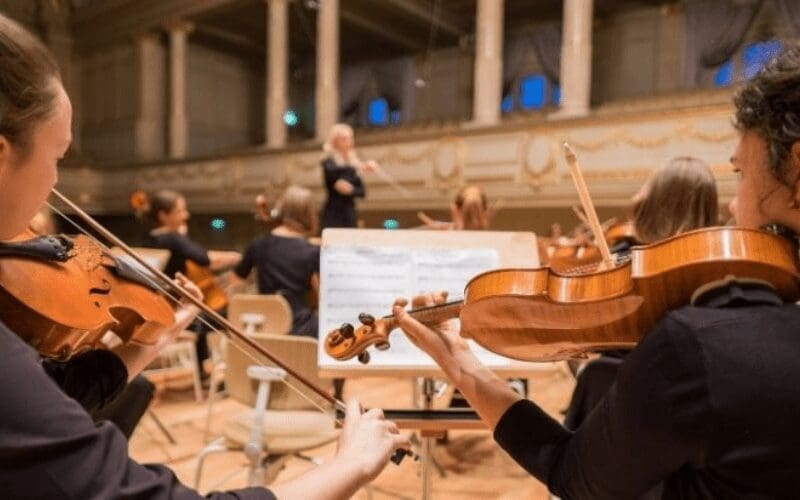
We mentioned orchestral families a little earlier on, but let’s dig a bit deeper.
We know there are four families but how many string instruments are in an orchestra? Where do different players sit? What is the largest brass family instrument in an orchestra? Let’s find out.
Strings are the largest family in the orchestra, comprising up to sixty players! String instruments can be plucked or bowed. The strings will include violins (first and second), violas, cellos, and basses.
Woodwind are the second largest section and make sound by blowing through a reed which vibrates. Woodwind instruments in an orchestra include the flute, oboe, clarinet, and bassoon. You may have heard of an instrument called the English horn – or the cor anglais – is a double-reed woodwind instrument in the oboe family.
Brass instruments make sound by buzzing their lips on a mouthpiece. The smaller the brass instrument, the lower pitch it is. Brass instruments in an orchestra include trumpet, French horn, trombone, and tuba.
If you were wondering which is the largest, it’s the tuba which can measure between 9 to 18 feet. As the bigger the tuba is the lower it gets, you can imagine how bassy an 18-foot tuba would be!
Percussion is the most diverse family in the orchestra – as well as the loudest! Performers will hit, scrape or shake to get a sound out of their instrument. Popular percussion instruments in an orchestra are: harp, timpani, snare drum, kettle drum, guiro, glockenspiel, xylophone, marimba, cymbals, tambourines, castanets, triangle, bass drum and more!
How Many People In An Orchestra
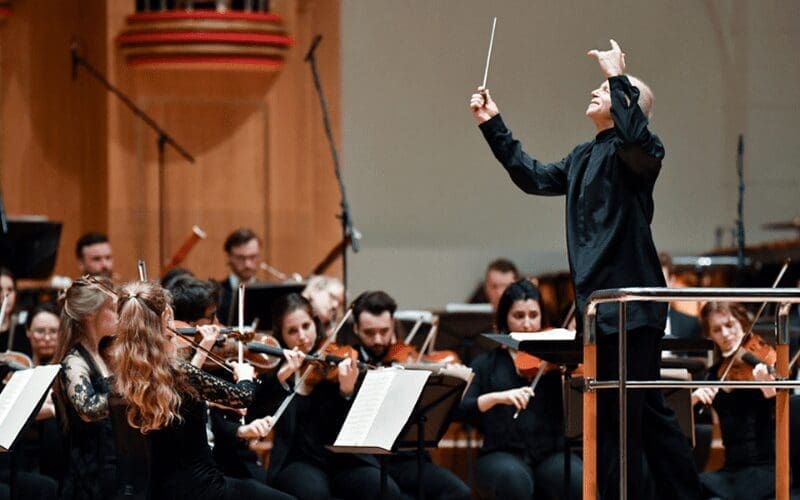
It is a common misconception that the number of an orchestra or the number of musicians in each family is fixed. However, there are some general rules for a full one.
You can expect thirty violinists split across the first and second violins (composers often write two independent violin lines for an orchestra, with the first usually being slightly more challenging).
To get a balanced stereo effect and ensure the two violin parts remain clear rather than muddy, 1st violins tend to sit on the left of the conductor while the second violins sit on the right.
Elsewhere, you might expect to see up to 12 violas, 12 cellists and 8 double bassists. The violas, cellos and those who play the double bass will be in the middle and move from left to right in order of highest pitch.
Woodwind are a smaller section with around 4 musicians per part. They are usually sat near to the string section they frequently double. For example clarinet and violas, flutes and 1st violins, bassoons, and cellos.
Horns will sit behind the woodwind section and strings in a single line in front of the percussion section. 5 horns, 4 trumpets, 4 trombones and 1 tuba are typical for a modern symphony orchestra.
Percussionists, of which there are usually between 3-5, will be sat at the very back due to their volume and function as the rhythm section.
The conductor will be at the very front facing the orchestra. If you’d like to read more about music conductors, check out our article Music Conductor: What Does A Music Conductor Do?
How Much Do Orchestra Musicians Make?

In the UK, if you’re looking to audition for a symphony or philharmonic orchestra, section musicians can expect to earn £35,000-£40,000.
The greater the orchestra’s prestige and the more concerts/tours it does (section musicians can be paid by the hour rather than gaining an annual salary!) the more orchestra musicians can make!
If you’re a leader, for example, the first violinist, or an experienced soloist, you can significantly more.
It’s worth noting that orchestral musicians are paid very differently depending on the country. The US, for example, can pay up to double what UK musicians make. Partly because orchestras are privately funded, and partly because musicians are incredibly unionised.
Famous Orchestras
If you’re interested in listening to some world-class playing, here are our top picks of the most famous orchestras right now!
The London Symphony Orchestra: England

The LSO are known as the ensemble behind the Star Wars franchise soundtrack and the Shape of Water (2017), as well as Rowan Atkinson’s iconic feature in the orchestra for the 2012 Olympic Games!
Vienna Philharmonic: Austria

Famous for their annual renditions of Strauss on New Year’s Day, the Vienna Philharmonic are 177-yrs old and are famous for performances of Wagner, Mahler, Bruckner and Brahms in impeccable, traditional fashion.
Royal Concertgebouw: Amsterdam
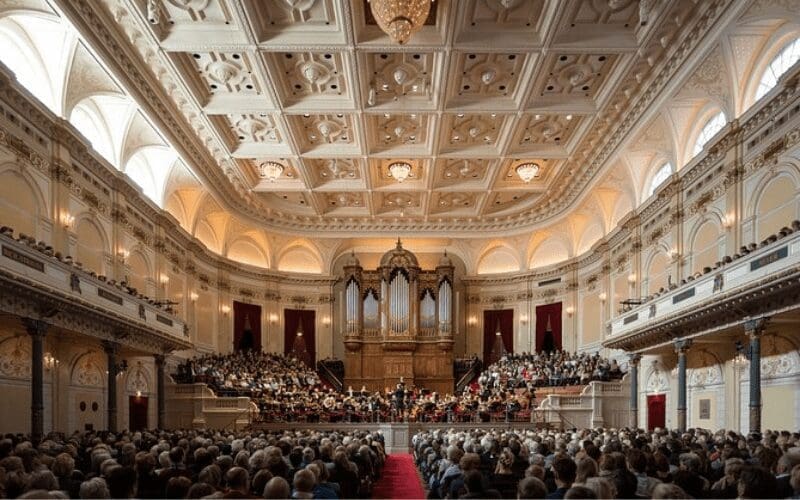
An institution in Amsterdam, the Royal Concertgebouw, founded in 1888 is known for clean precision in renditions of Strauss and Mahler classics.
However, the RCO’s Horizon plan ensures the orchestra frequently premiers contemporary commissioned work, so it doesn’t fall behind in musical innovation. See their latest work, Mozart’s Gran Partita, here.
The Los Angeles Philharmonic: USA
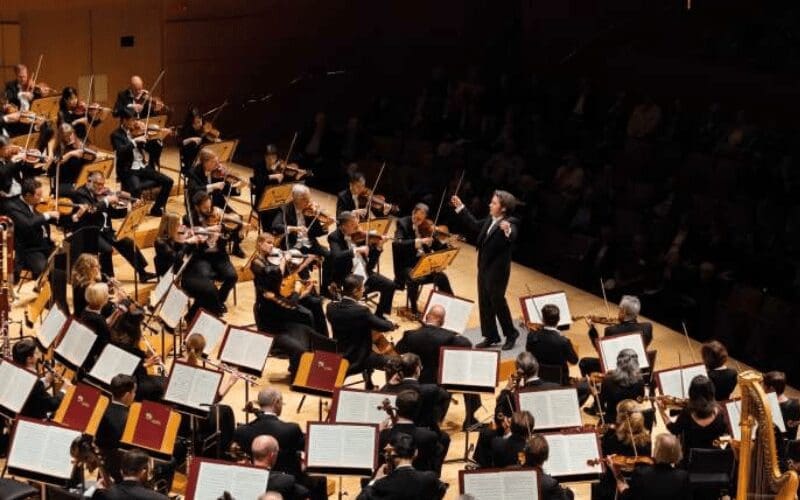
This 103 yr old orchestra never shies away from musical experimentation!
Under the expert musical guidance of Gustav Dudamel, the orchestra boldly blends classical and pop genres to engage music-lovers across the spectrum.
The orchestra’s celebration of its 100 year anniversary in 2018, in collaboration with Katy Perry and Herbie Hancock is a great example of this.
The Aurora Orchestra: England
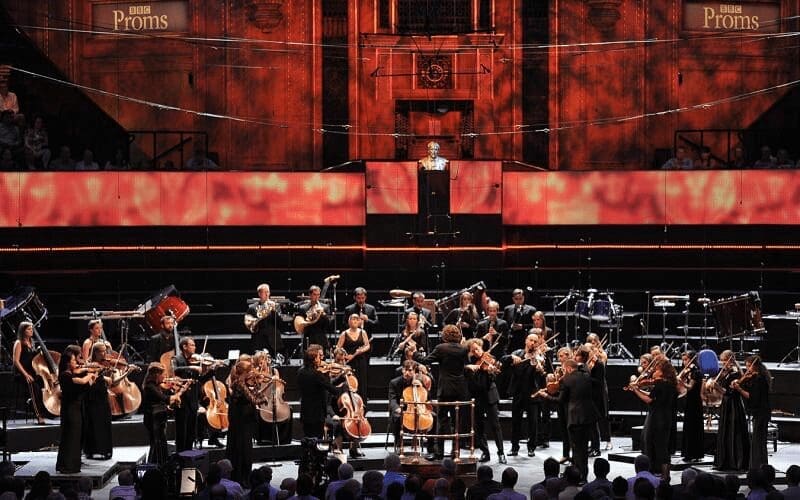
Another London based orchestra, the Aurora was founded as recently as 2005 by students.
Famously, the orchestra avoids use of sheet music, requiring all their musicians to memorise reams of symphony music scores by heart as well as performing them with passion.
Lesser known but an impressive emerging force.
Chicago Symphony Orchestra: USA
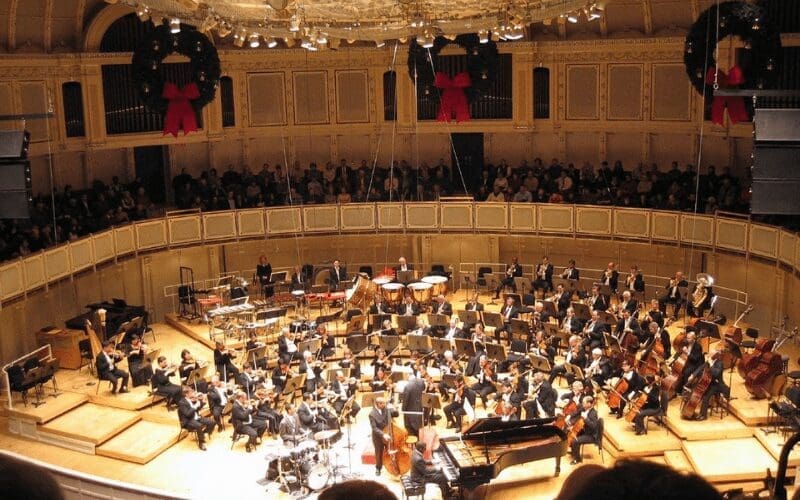
Winner of 62 Grammys, the Chicago Symphony performs 100 gigs every year, indicating their huge repertoire and demand.
The orchestra’s musical director, Riccardo Muti, has been leading the group since 2010 and has over fifty years of experience in classical music.
Our Final Thoughts

Hopefully you had a chance to listen to some great music as well as learning exactly what an orchestra is. As well as how it functions to create epic dimensions of sound for both concert halls and soundtracks.
We’ve discussed the different types of orchestra, how many people are in a family, what musical families are, and where players sit to give the audience the best acoustics they can.
Additionally, we’ve discussed what orchestral musician salaries look like and how they can vary. Finally, we checked out some incredibly talented and famous orchestras from all over the world and heard some wonderful music.
Let us know if this helped answer your questions and good luck for all the aspiring orchestra musicians and conductors out there!







